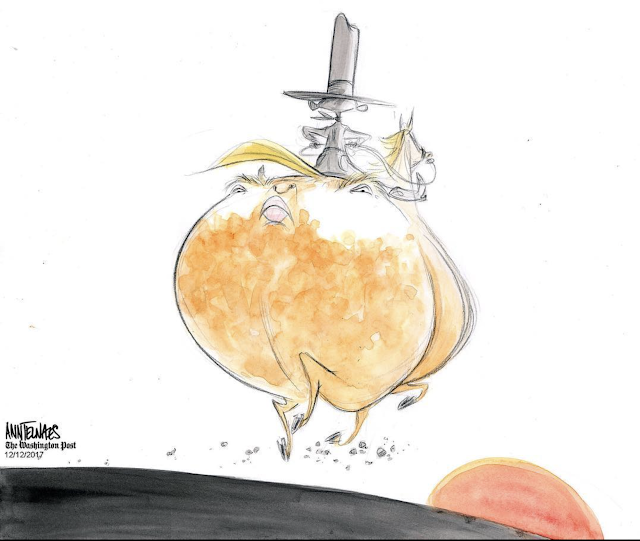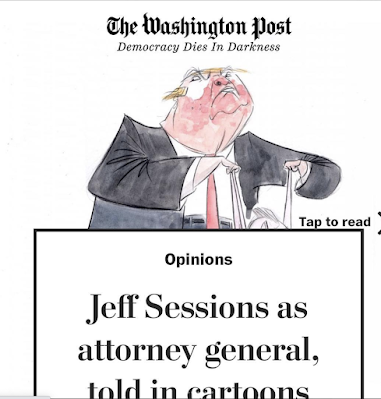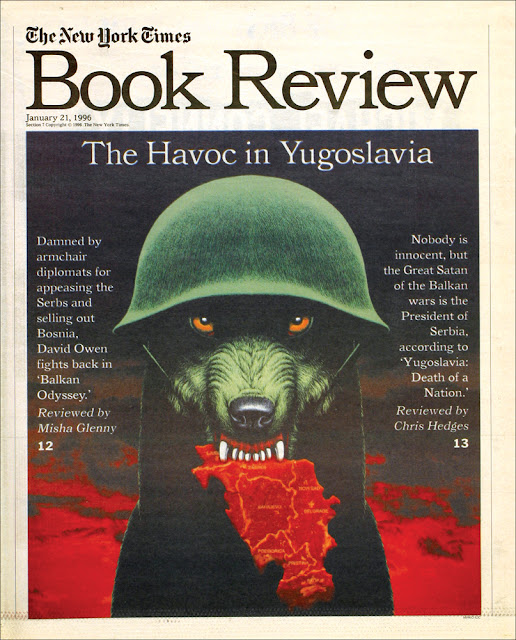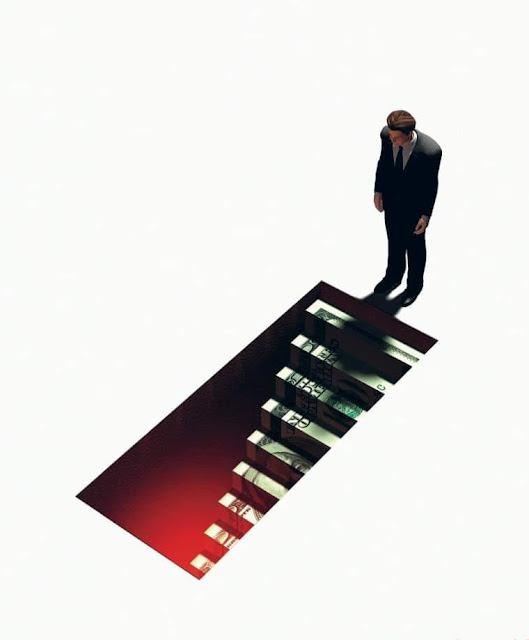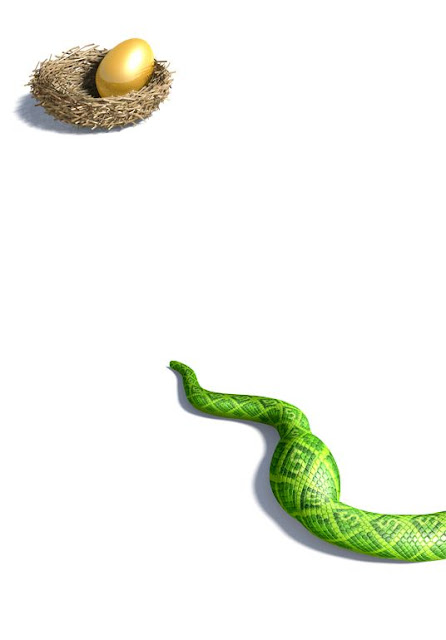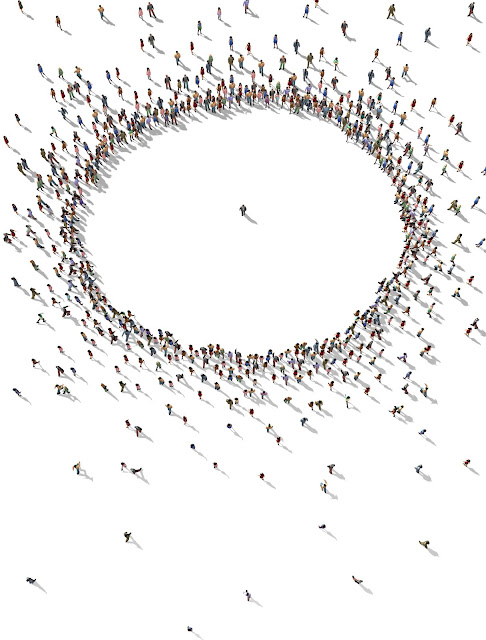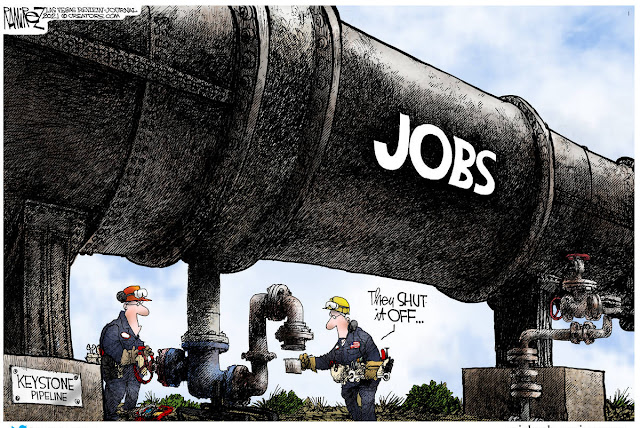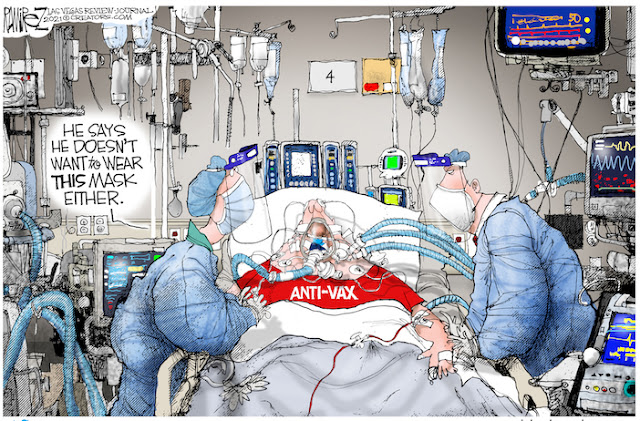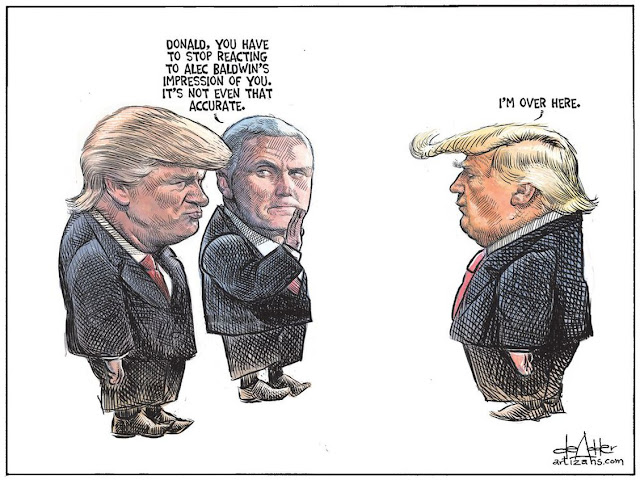As far as I can tell, Michael Ramirez can draw any damn thing he wants.
I mean that in both senses: he can get away with almost any concept and he has the drawing ability to execute that concept.
Ramirez seems unfazed by regular death threats in reaction to his controversial cartoons. He notes that his first death threat came from his parents when he told them he was giving up plans for medical school to become a political cartoonist.
But more importantly for the purposes of this blog, Ramirez seems able to capture any subject he chooses. For example, he can beautifully draw the perspective inside a confined plane cabin, if that's what his idea calls for...
... but at the same time, he can effectively draw perspective in the wide open sky outside.
He's great at capturing heavy industrial structures...
...as well as small technological gadgets:
He is fearless about drawing from any angle...
... or taking on historical and anthropological themes:
When you ask Ramirez how he was trained to draw such a diverse array of subjects, he responds, "I was always curious about how everything works.... I like breaking the pieces down, finding out the components, how everything works, and then putting them back together." That instinct, combined with a natural talent for recreating whatever he saw, accounted for the vast majority of his art training.
Ramirez says he may have 15 ideas a day and writes them down on cocktail napkins or other stray bits of paper to keep track of them.
Sometimes when he has a little too much time on his hands, he will draw something fanatical like this:
But this tight, trompe l'oeil drawing is not what impresses me most about his work. I'm more impressed by pictures like the following, where Ramirez simply drew two backsides against a sky.
95% of today's political cartoonists, if they had the courage to attempt such an angle, might draw these backs as two rectangles. Notice how Ramirez infuses character into these backs, to make the drawing work-- the sagging, weary shoulders, the stylized, leaning bodies with their foreshortened heads and big butts-- these weren't taken from a photograph or learned in an anatomy class. The variety of the linework adds volume, the contrast between the blue and white is very effective, and the whole drawing is staged thoughtfully-- for example, Uncle Sam respectfully takes off his battered hat and places it on his knee. A lot of nice visual touches contribute to the message of the cartoon.
 |
| Thousands of cartoonists have drawn thousands of grim reapers, yet when it's Ramirez's turn, he puts aside the cookie cutter and makes a fresh effort to produce something worthwhile. |
Unlike the super-realistic door lock and wood grain in the cartoon above, in this next cartoon, Ramirez takes liberties with the human form. Uncle Sam has an impossibly high waist and gorilla length arms. These exaggerations help meld the two figures together. For me, these types of drawings work better than intense realism.
Well known for his conservative views, Ramirez says, "People know philosophically where I stand... but people are drawn to the visual medium, and if you can make it interesting enough, they'll sneak a peak. Then you've got 'em."




